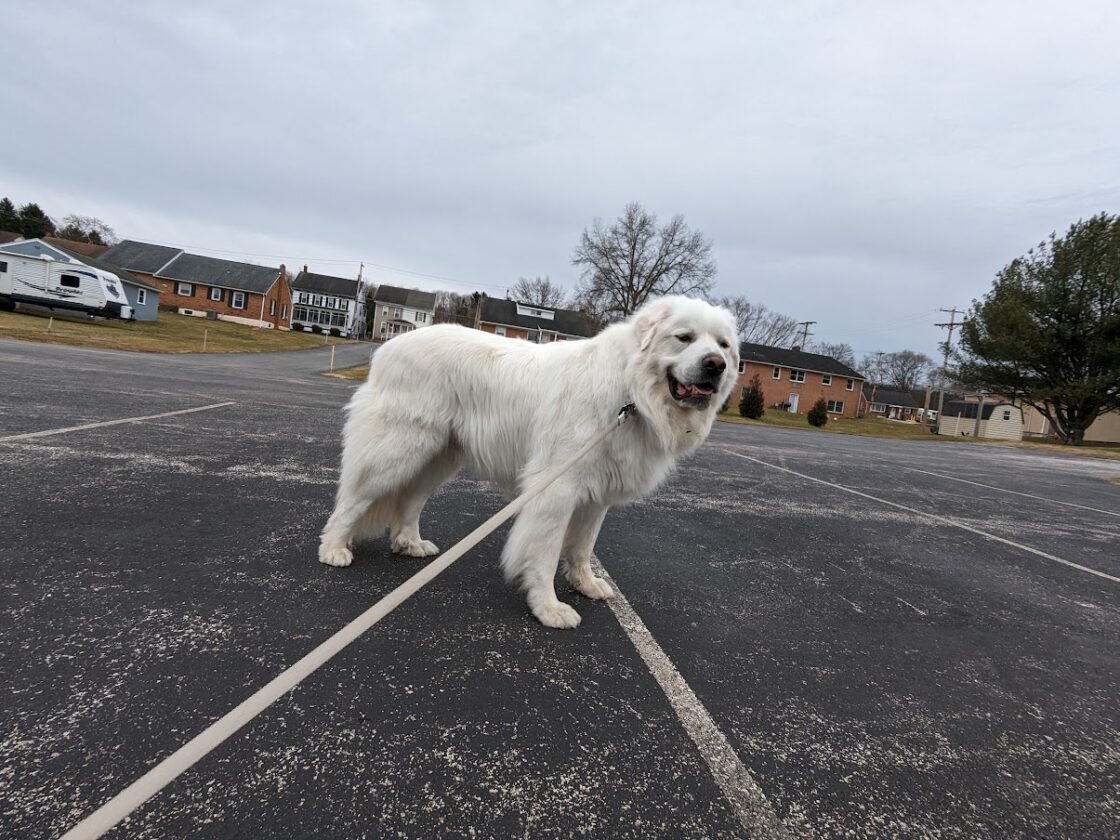
What is a Double Dew Claw
The Great Pyrenees is a large and majestic breed of dog that is known for their beautiful white coat and gentle temperament. One unique feature of the Great Pyrenees is their double dew claws, which can be found on their hind legs. They are not the only breed to sport them—Beauceron, briard, and Icelandic sheepdogs have them as well—but they are probably the most well known.
When we walk Blueberry, one of the things many strangers like to comment on are his ginormous paws–which are made to look even larger by the extended claws that stick out the backs.
So what is a Double Dew Claw?
A dew claw is a vestigial digit on the foot of many mammals, including dogs. While most dogs have a single dew claw on their front feet, the Great Pyrenees is one of a few breeds that also has a double dew claw, with two claws rather than just one, on their hind legs. This double dew claw is located higher up on the leg than the other toes and is supported by bone and muscle, making it functional and useful for the dog.
 The double dew claw is believed to be an ancient adaptation that allowed dogs to climb steep terrain, particularly in mountainous regions like the Pyrenees Mountains, where the Great Pyrenees breed originated. The double dew claw provides additional support and traction when the dog is climbing or walking on rough terrain, helping to prevent slips and falls. Pyrs may also use them for balance, running fast, or gripping toys and bones.
The double dew claw is believed to be an ancient adaptation that allowed dogs to climb steep terrain, particularly in mountainous regions like the Pyrenees Mountains, where the Great Pyrenees breed originated. The double dew claw provides additional support and traction when the dog is climbing or walking on rough terrain, helping to prevent slips and falls. Pyrs may also use them for balance, running fast, or gripping toys and bones.
While the double dew claw is a unique and interesting feature of the Great Pyrenees breed, it does require some extra care and attention. Because the dew claw is not in contact with the ground, it can become overgrown and prone to snagging on objects, which can be painful for the dog. Regular trimming of the dew claws is necessary to prevent these issues.
In addition to regular trimming, it’s also important to check the double dew claws for any signs of injury or infection. Because the dew claw is located higher up on the leg, it can be difficult to spot any problems, so it’s important to inspect the area regularly.
Some vets believe that dew claws need to be removed, as on some breeds, the dewclaws can snag on something causing the animal pain or discomfort. Some owners even take the step of having the dewclaws removed from puppies. But this is not needed on a Great Pyrenees dog! If your vet suggests it, get a second opinion before taking any action!
In conclusion, the double dew claw is a unique and functional feature of the Great Pyrenees breed. While it may require some extra care and attention, it provides the dog with additional support and traction when walking on rough terrain. If you’re considering adopting a Great Pyrenees, it’s important to be aware of this unique feature and to provide your dog with the proper care and attention they need to stay healthy and happy.

